How to Vent a Dryer in the Middle of the House
Author: Omar Alonso | Editor: Omar Alonso
Review & Research: Jen Worst & Chris Miller

Proper dryer ventilation is crucial for safety and efficiency, yet homeowners face the challenge of venting a dryer located in the middle of their house. Finding a solution can be daunting, with limited options or no direct access to an outside wall. Let's explore how to vent a dryer in the middle of the house.
Luckily, there are various methods to ensure your dryer gets ample airflow while meeting building codes and safety requirements. In this blog post, we’ll explore practical ways to vent a dryer in the middle of the house and tips for safe and efficient venting.
How to Vent a Dryer in the Middle of the House
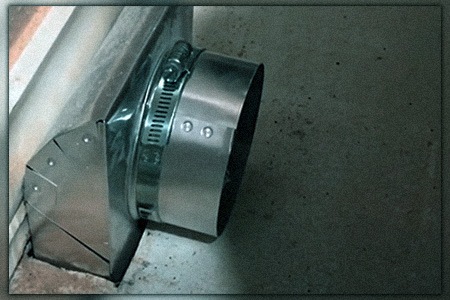
If you don’t have the convenience of an exterior wall nearby, there are a few alternative methods you can consider. The primary goal is to safely exhaust the hot air produced by the dryer to the outside of your home.
Venting Through a Chase or Shaft
Venting through a chase or shaft involves utilizing existing vertical spaces in the house to create a path for the dryer exhaust. Before proceeding with this method, assessing the availability and suitability of a chase or shaft in your home is important.
- Start by identifying if your house has a chase or shaft that runs vertically from the middle floor to the roof. This vertical passage serves as a conduit for the dryer ductwork.
- Next, determine if the chase or shaft can accommodate the required ductwork and provide proper ventilation.
- Then install a rigid or flexible metal duct from the dryer to the chase or shaft.
- Plan the duct route through the chase or shaft to minimize bends and obstructions. A straight and direct path will promote efficient airflow and reduce the risk of lint buildup.
- Finally, install a roof vent at the termination point of the duct to safely exhaust the air outside. Cover the roof vent so water doesn't enter.
Additionally, it’s crucial to properly secure the duct connections to prevent leaks and ensure smooth airflow. Take accurate measurements and make necessary adjustments to ensure the duct fits properly within the chase or shaft. Furthermore, ensure the vent is secured and sealed to the roof to prevent leaks or potential damage.
Venting Through a Crawl Space or Basement
You can vent the dryer downward if you have a crawl space or a basement beneath the middle floor. Venting through a crawl space or basement involves directing the dryer exhaust downward to an exterior vent. A dryer vent blowing under the house is an option but you don't want to blow the air right into the interior space.
Install a rigid or flexible metal duct from the dryer, and route the dryer vent through the floor joists or walls to the crawl space or basement. Consider any local building codes or regulations regarding venting in these spaces.
Then, extend the duct to the house’s exterior through a wall or foundation vent. Moreover, install a vent cap or cover on the exterior to allow the hot air to escape while preventing pests or debris from entering. Ensure that the vent is secured correctly to avoid leaks and is large enough to accommodate the airflow from the dryer.
One thing to realize is we're saying you're going through the crawl space or basement, not into them. You don't want to vent that heat and moisture into your home areas where you can create mildew or mold problems. The same goes for venting a dryer into a garage. Don't do it.
Venting With a Periscope or Offset Duct
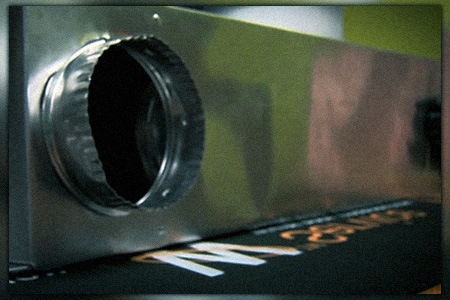
With dryers in the middle of a house, you may encounter obstacles such as cabinets or walls, making a straight path for the duct difficult. That’s where a periscope or offset duct comes in. This is a great method for how to vent a dryer in the middle of the house.
A periscope or offset duct is a specially designed metal duct that allows you to vent the dryer around obstacles, such as cabinets or walls. It’s typically adjustable and can be angled to redirect the airflow in the dryer exhaust. You can install the periscope or offset duct from the dryer to the nearest exterior wall, shaft, or crawl space.
It’s crucial to note that when using a periscope or offset duct, you should follow the manufacturer’s instructions and guidelines for installation. Additionally, check local building codes and regulations to ensure compliance with safety standards.
Venting Through an Interior Wall
Venting through an interior wall provides another option for a dryer in the middle of the house. This method involves installing a duct that runs through the interior wall and vents the dryer exhaust to the house’s exterior.
Look for an interior wall close to the dryer that allows a direct route to the exterior without significant obstacles. Measure and mark where the duct will enter and exit, and carefully cut two holes in the interior wall. Moreover, ensure the holes are the appropriate size to accommodate the duct.
Finally, connect the duct to the back of the dryer, ensuring a secure and airtight fit, and feed it through the interior wall. Remember to attach the duct securely to the wall using suitable brackets or supports to prevent air leaks.
Venting Through a Drop Ceiling
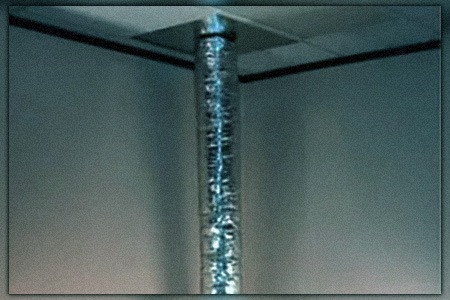
Venting through a drop ceiling presents another option if your dryer is in the middle of the house. If your house has a drop ceiling, you can route the dryer duct above the ceiling and connect it to an exterior vent.
Ensure that the drop ceiling provides sufficient space to accommodate the ductwork and that no fire safety concerns are associated with this method. Furthermore, regularly inspect and clean the duct to prevent lint build-up, which can obstruct airflow and pose a fire hazard. Keeping the venting system clear and in good condition is vital for optimal dryer performance.
Venting Through a Window
If there are no feasible options for venting through walls or ceilings, consider venting the dryer through a nearby window. This method uses a window vent kit to connect the dryer duct to a panel or adapter fitted into the window opening.
Follow the instructions provided with the vent kit to install the panel or adapter in the window opening. Make sure it’s securely attached and properly sealed to prevent air leaks. Then, attach the dryer duct to the vent opening on the installed panel or adapter.
It’s essential to choose a window that is close to the dryer and can be easily accessed. However, venting through a window may not be a permanent solution, as it can affect its functionality and aesthetics.
Tips for Properly Venting a Dryer
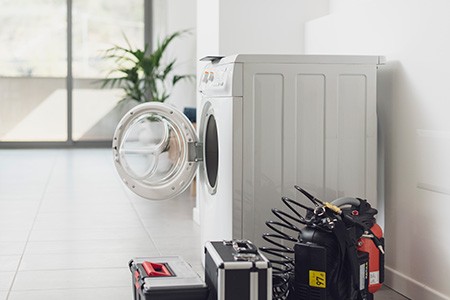
When it comes to how to vent a dryer in the middle of the house, there are some essential tips and tricks to remember. For proper ventilation and to prevent potential hazards, it’s important to consider the type of dryer, building codes, and regular maintenance of the vent system.
Type of Dryer Being Used
The dryer type can significantly impact how it should be vented and what materials should be used for the exhaust duct. For example, gas dryers require special care when venting to ensure proper ventilation and avoid fire hazards.
When choosing materials for your dryer venting, selecting materials approved by building codes and regulations is essential. Vinyl or nylon ducts aren’t recommended as they can easily get crushed, leading to blockages that increase the risk of fire hazards.
Instead, aluminum or galvanized steel exhaust ducts are suitable options since they provide smooth airflow while remaining durable over time. However, following the manufacturer’s recommendations regarding the specific type of venting required for your dryer model is essential.
Building Codes & Regulations
Following building codes and regulations is also essential when venting a dryer. These guidelines protect you, your family, and your house from hazards like lint build-up or fire outbreaks. Building codes often stipulate specific requirements, such as the maximum dryer duct length when venting directly outdoors.
Ignoring these regulations can have severe consequences. Lint build-up in dryer vents is one of the leading causes of house fires nationwide. It’s crucial to pay attention to safety concerns associated with proper ventilation.
Regularly Clean the Dryer & Vent System
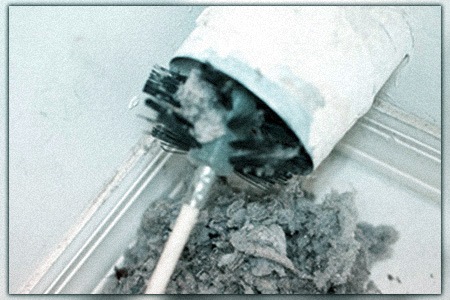
Maintaining your dryer and its ventilation system is crucial for safety, energy efficiency, and preventing potential fire hazards. Over time, lint accumulation in the vent can obstruct airflow and cause your dryer to work harder than it needs to.
This not only wastes energy but also affects the lifespan of your machine. Regular upkeep involves cleaning both the lint trap after every load and scheduling a professional inspection and cleaning at least once a year.
Consulting a Professional Contractor
It’s important to note that venting a dryer in the middle of the house may require additional construction work and potentially involve modifying existing structures. To ensure a safe and compliant installation, seeking a professional’s help or a licensed contractor is highly recommended.
Moreover, a professional can assess your situation and guide the best way to vent your dryer safely and comply with local building codes. They can also troubleshoot issues, make necessary adjustments, and ensure your dryer is effectively vented.
That’s How to Vent a Dryer in the Middle of the House
Properly venting a dryer in the middle of the house requires careful planning and consideration. You can effectively vent the hot, moist air outside your home by utilizing shafts, crawl spaces, or basements or employing periscope or offset ducts.
Remember to prioritize safety by adhering to local building codes, maintaining proper airflow, and conducting regular cleaning and maintenance. With these guidelines, you can ensure your dryer operates efficiently and minimize the risk of potential hazards associated with improper ventilation. And that's how to vent a dryer in the middle of the house. Take caution and take care.



